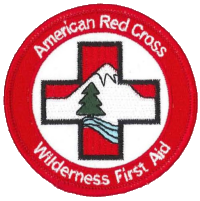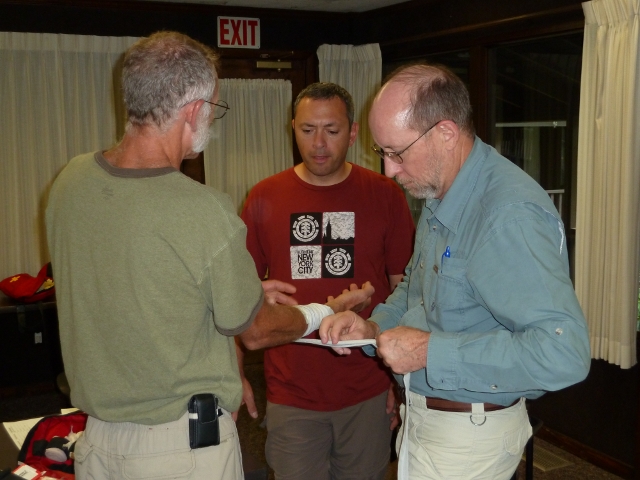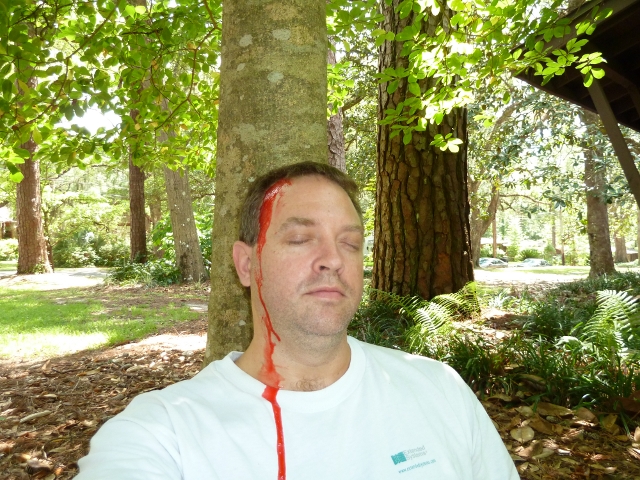
Wow! What a jam-packed day! Yesterday seemed full until we kicked off this morning. After a short review of putting all of the topics together we jumped right into our final CPR assessment. Everyone saved their dummy. It was a beautiful sight!

Having passed CPR with flying colors we moved on to signs/symptoms, treatment, and “live” scenarios. We covered bone & joint issues, such as dealing with the largest wilderness offender, strains and sprains, which account for 50% of all wilderness medical incidents.
We moved into head, neck, and spinal injuries next. This covered from superficial injuries to severe brain injuries. Next we moved down the body and covered various chest injuries. After some lecture and hands-on demonstrations on treating bleeding and punctures it was time to try our hand at bandaging.

After some more lecture we did a “live” exercise outside. Our victims dispersed and we went out in teams to find them. My partner and I happened upon a poor lady that had hurt her knee while working on the trail. We didn’t know if it was broken so we decided to not risk it and used her tool to splint the leg. She was very happy. Sorry for the cloudy image. I didn’t realize the lens was still fogged after going from the AC classroom to outside.

The topics continued to come at us in rapid succession: eyes, burns, diabetes, strokes, epilepsy, and abdominal issues. We also covered heat- and cold-related issues like heat cramps, exhaustion, and stroke along with hypothermia.
Then it was back outdoors for the final skills assessment. It was my turn to be a victim and I didn’t fair so well. I tripped coming down the trail and hit my head. I freaked when the nice people that stopped to help told me I was bleeding! During their assessment they found that not only had I split my head open but that I also had a stick buried in my back. It was a bad day of hiking. Fortunately they saved my life and I lived to hike another day.

We wrapped up the course talking about critters like ticks, chiggers, spiders, and snake. And finally we covered water accidents.
There was a ton of information packed into these two days but it was done in a remarkably fun environment. We had great students with great experiences to share and we all learned from each other as well as from the book and instructor.
I really hope you’ll be encouraged to seek out this type of training yourself. If you do any type of outdoor activity where you may find yourself more than an hour away from professional medical help I firmly believe that this education can be the difference between life and death in certain cases.
Happy hiking and stay safe!
